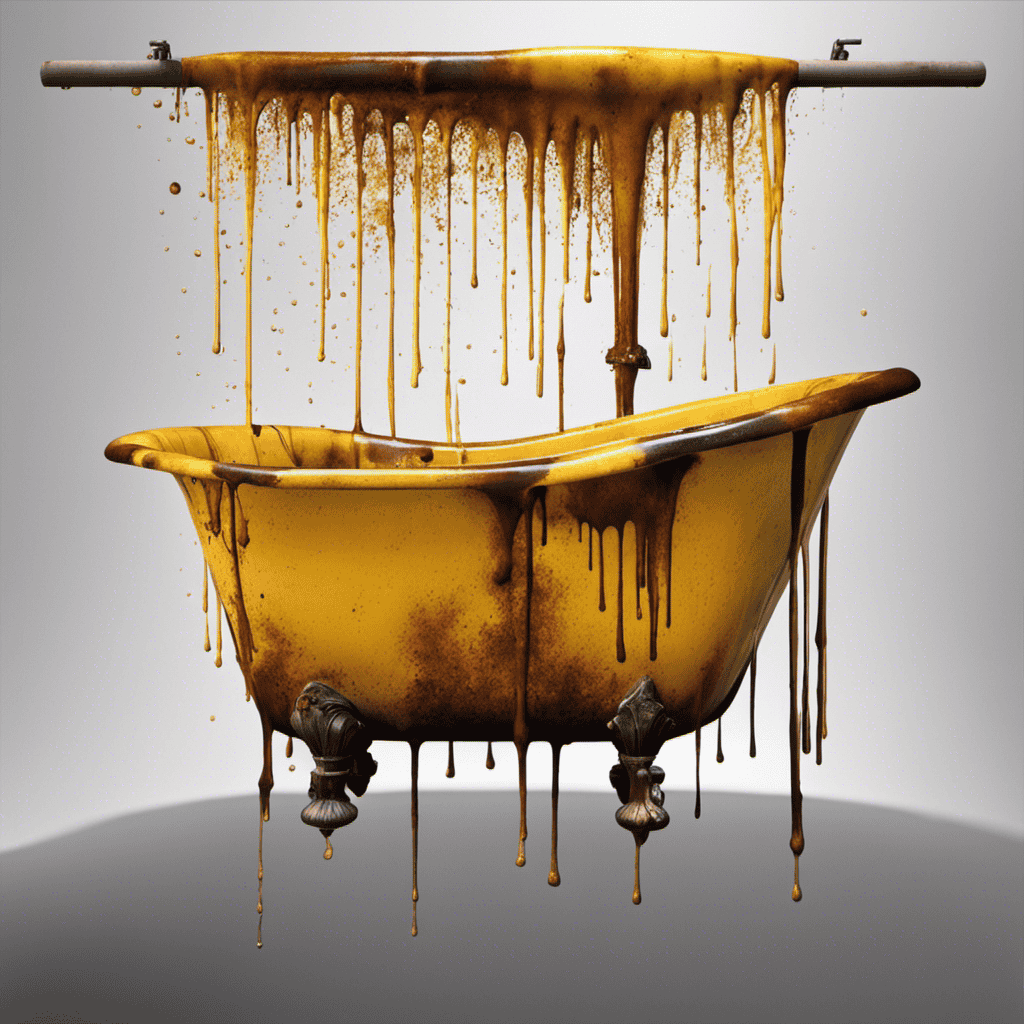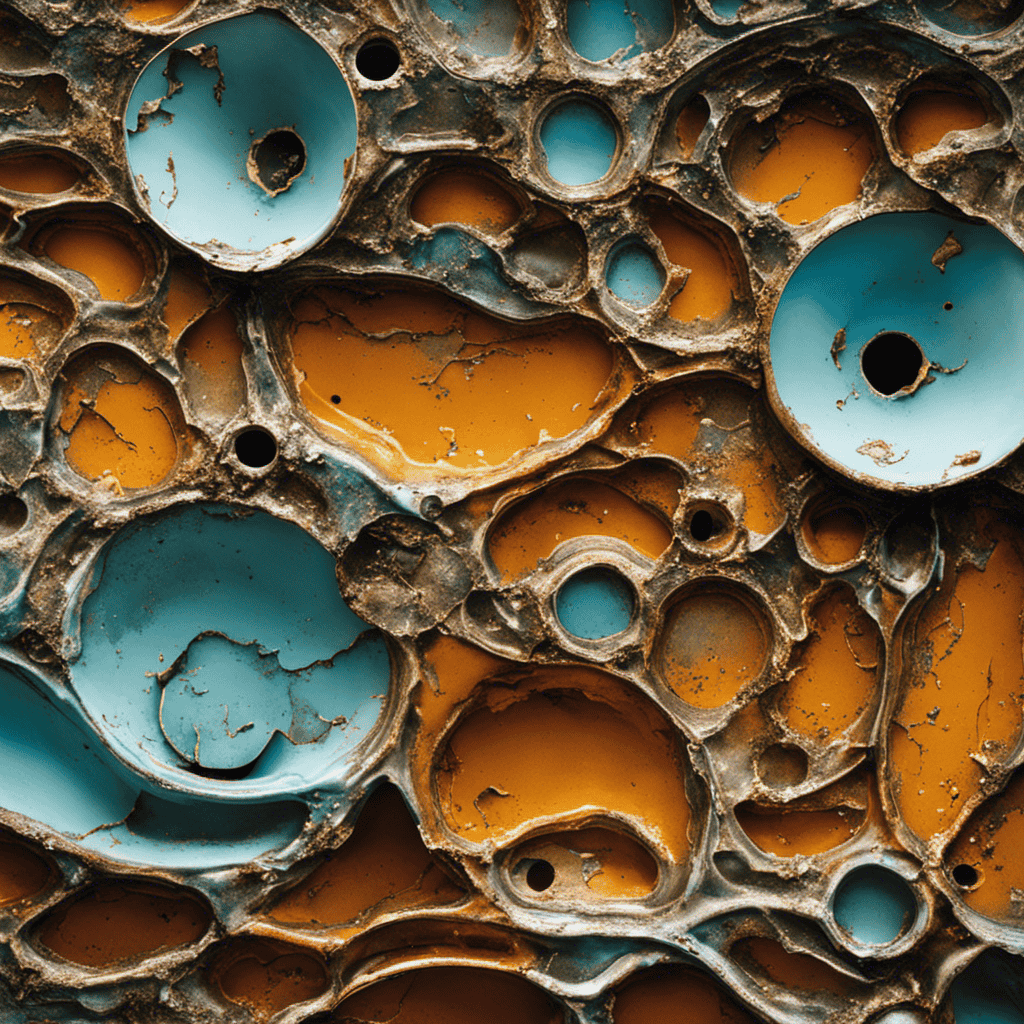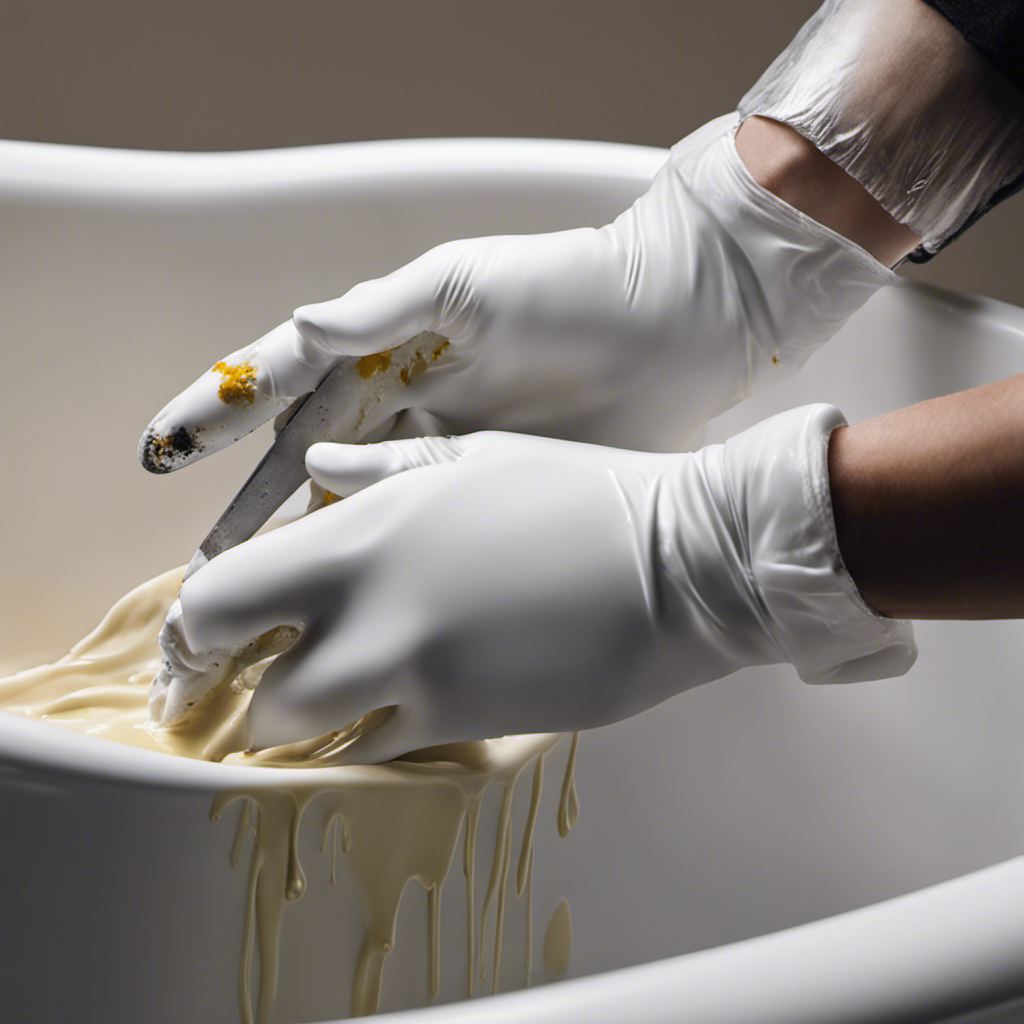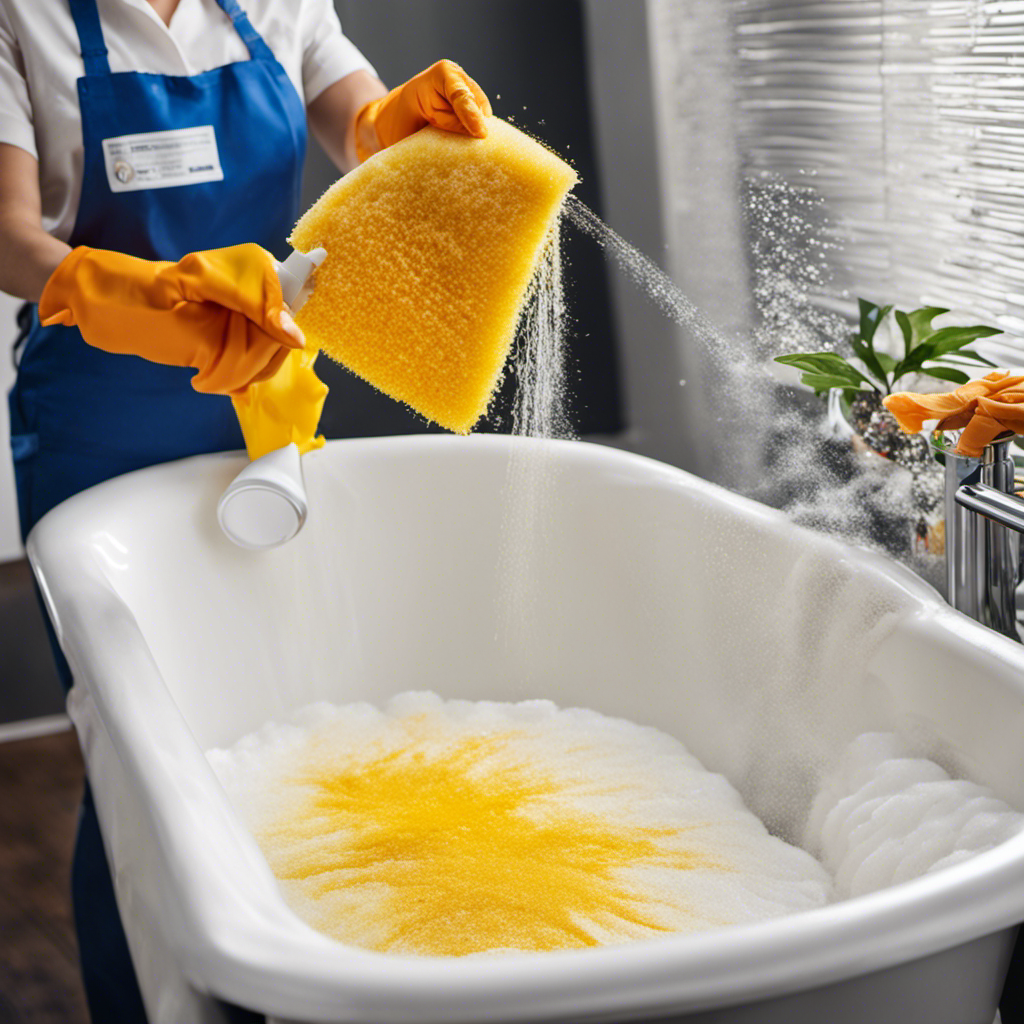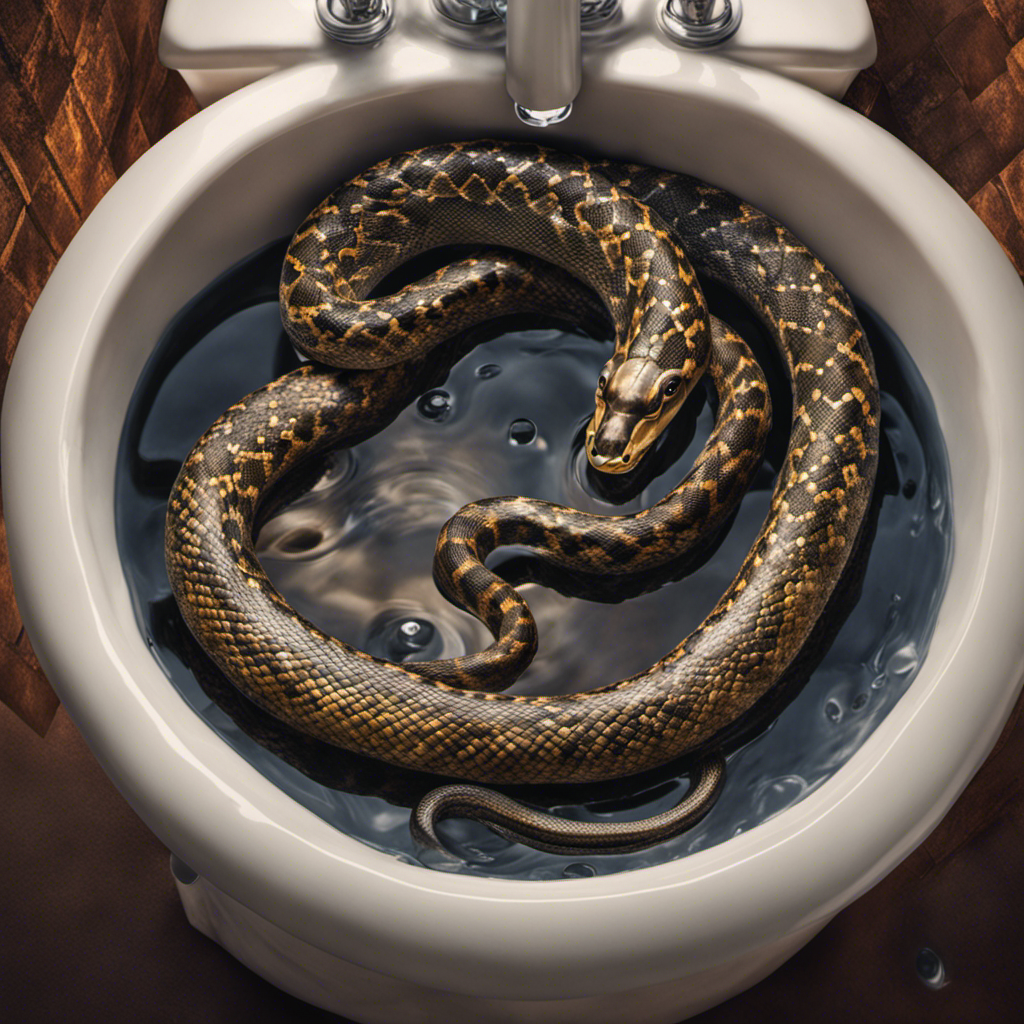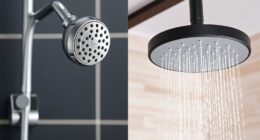Ever wondered why your bathtub water has a peculiar yellow tint? Well, fear not, as I’m here to shed some light on this disconcerting mystery. In this article, we will explore the various possible causes of yellow bathtub water, the potential health effects it may have, and how to test for contaminants.
Additionally, we’ll delve into effective remedies to restore your water’s pristine clarity and discuss preventive measures for the future.
So, let’s dive into the world of bathtub water discoloration and find the solutions you seek.
Key Takeaways
- Yellow bathtub water can be caused by rusty pipes, corroded plumbing systems, high mineral content in the water, bacterial contamination, or chemical reactions with chlorine.
- Yellow bathtub water can have negative effects on health, including dryness and irritation of the skin, allergic reactions, potential health risks from bacteria or contaminants, discomfort during bathing, and decreased water quality.
- Testing for contaminants in bathtub water can be done through visual inspection, water testing kits, or sending a water sample to a certified laboratory for analysis. Regular monitoring of water quality is also important to identify potential health hazards.
- Remedies for yellow bathtub water include using a mixture of baking soda and vinegar to remove stains, conducting a water quality test to determine the cause of discoloration, installing a chlorine filter or water conditioner, using a water softener or vinegar soak to remove mineral deposits, and addressing the specific cause of yellow water.
Possible Causes of Yellow Bathtub Water
One possible cause for your yellow bathtub water could be rusty pipes. When the pipes in your plumbing system start to corrode, the rust particles can mix with the water, leading to yellow discoloration. Rusty pipes are commonly found in older homes or in areas with high mineral content in the water.
To remove yellow stains caused by rusty pipes, you can try using a mixture of vinegar and baking soda. First, pour some vinegar into the affected area and let it sit for a few minutes. Then, sprinkle baking soda over the stained area and scrub gently with a sponge or brush. Rinse thoroughly with water to remove any residue. Repeat this process if necessary until the stains are completely gone.
Effects of Yellow Bathtub Water on Health
The effects of yellow bathtub water on health can vary depending on the underlying cause. Yellow water can be a result of various factors, including rust, minerals, or even bacteria. While the discoloration itself may not pose a significant health risk, it is essential to address the underlying issue to ensure the water is safe for use. The effects of yellow bathtub water on the skin can be unpleasant, causing dryness, irritation, and even allergic reactions in some individuals. To better understand the potential solutions for yellow bathtub water, let’s take a look at the following table:
| Cause of Yellow Water | Potential Solutions |
|---|---|
| Rust in pipes | Replacing or cleaning the pipes |
| Mineral deposits | Installing a water softener |
| Bacterial contamination | Disinfecting the water supply system |
Addressing these underlying causes can help eliminate the yellow discoloration and improve the quality of your bathtub water. Now, let’s explore how to test for contaminants in bathtub water.
How to Test for Contaminants in Bathtub Water
There are various methods to test for contaminants in bathtub water. Ensuring bathtub water quality is crucial to maintaining a healthy bathing environment. Here are some effective ways to test for common contaminants in your bathtub water:
- Conduct a basic visual inspection for any discoloration or particles in the water.
- Use water testing kits specifically designed for analyzing the quality of bathtub water.
- Consider sending a water sample to a certified laboratory for a comprehensive analysis.
Testing for contaminants is essential as it helps identify potential health hazards and ensures the safety of your bathing water. By understanding the quality of your bathtub water, you can take appropriate measures to address any issues and maintain a clean and healthy bathing environment.
Now that we have identified the methods to test for contaminants, let’s explore the various remedies for yellow bathtub water.
Remedies for Yellow Bathtub Water
To remedy yellowish bathtub water, try using a mixture of baking soda and vinegar. This simple solution can help to remove stains and discoloration caused by mineral deposits or hard water. Before trying any remedies, it’s important to understand the possible causes of yellow bathtub water. One common cause is the presence of iron or manganese in the water supply, which can result in yellow or brown stains. Another cause could be high levels of chlorine, which can react with certain minerals to produce a yellow tint. To determine the exact cause of the discoloration, it’s recommended to conduct a water quality test. This will help identify any contaminants or chemical imbalances in the water, allowing you to choose the most appropriate remedy.
| Discoloration Causes | Water Quality Test | Remedies |
|---|---|---|
| Iron or Manganese | Conduct a water quality test to check for high levels of iron or manganese. | Use a mixture of baking soda and vinegar to remove stains. |
| High chlorine levels | Test the water for chlorine levels. | Install a chlorine filter or use a water conditioner. |
| Hard water | Test the water for hardness levels. | Use a water softener or vinegar soak to remove mineral deposits. |
Preventing Yellow Bathtub Water in the Future
In order to prevent yellow bathtub water in the future, it’s important to regularly clean and maintain your plumbing fixtures. By following these simple steps, you can ensure clean and clear water every time you use your bathtub.
-
Flush your pipes regularly: This helps to remove any sediment or buildup that can cause discoloration in the water.
-
Keep your drains clean: Regularly clean out your drains to prevent any clogs or blockages that can lead to water discoloration.
-
Monitor your water quality: Conduct regular water tests to ensure that the quality of your water is maintained at a high standard. This can help identify any potential issues before they become a problem.
Conclusion
In conclusion, yellow bathtub water can be caused by a variety of factors, including rust, minerals, or even bacteria. While it may not always pose a serious health risk, it is important to test for contaminants to ensure the water is safe for use.
Remedies such as cleaning the pipes or using water filters can help alleviate the issue. By taking preventative measures, such as regular maintenance and cleaning, you can avoid yellow bathtub water in the future.
Remember, ‘an ounce of prevention is worth a pound of cure.’
